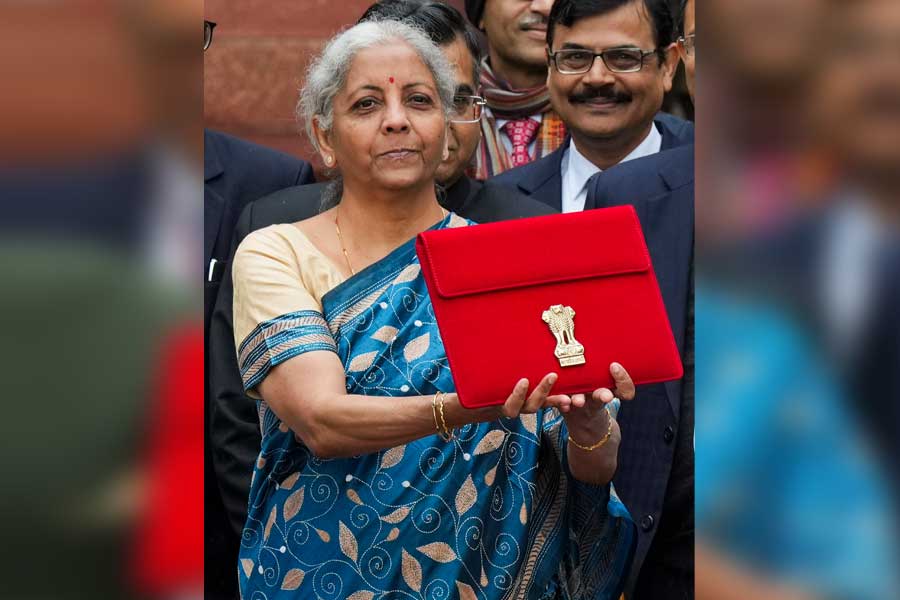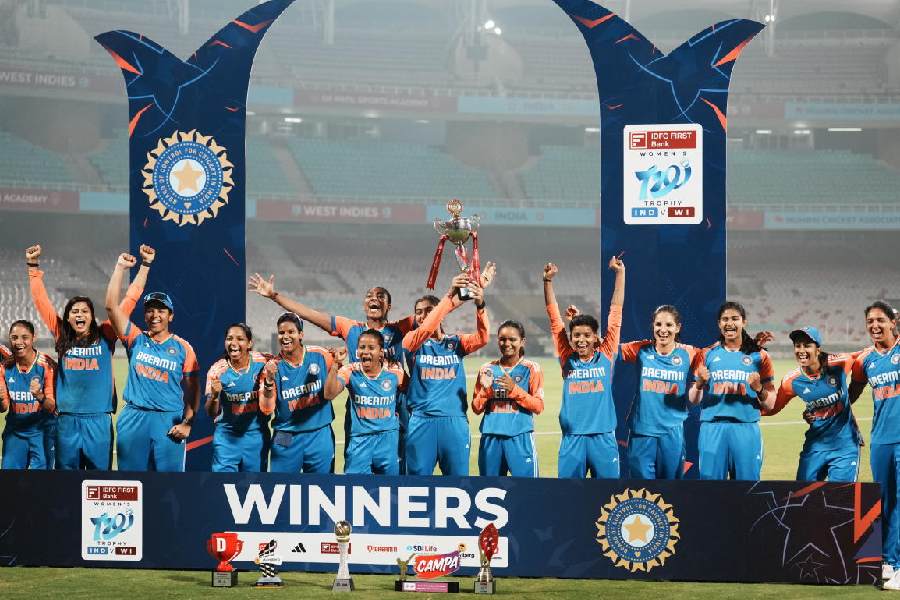First thing to know from this pre-election budget: it’s not a feel-good Budget for voters – there are no tax or subsidy giveaways. It’s a budget from a government that’s supremely confident it can win re-election without needing to offer any handouts.
Instead, the Budget’s emphasis is on record capital spending to promote job creation and growth and fiscal responsibility to draw more investment as it gears up for the April-May vote. In the words of Prime Minister Narendra Modi, the budget aims to put the country “in a sweet spot”.
“In this budget, capital expenditure has been raised to a historic high of Rs 11.11 trillion, while keeping the fiscal deficit in control. To put it in the terms of economists, this is a sweet spot," Modi said after the budget presentation.
The government is banking on the increased investment creating a so-called “virtuous circle” of higher incomes and more consumption leading to greater business investment and growth. India’s poised to become the world's third-largest economy in the next three years, reaching a GDP of $5 trillion from the current $ 3.7 trillion, the finance ministry says.
In previous years, the government has been accelerating its outlays on roads, and other infrastructure. While the pace of the rise is slower, capital expenditure “is being increased steeply for a third year in a row,” Finance Minister Nirmala Sitharaman said in her sixth Budget speech that was her shortest ever – running at 56 minutes.

TTO Graphics.
"The tripling of capex in the last four years has resulted in a multiplier effect on economic growth and employment generation," Sitharaman said, adding that the Budget has taken “the lead once again to ramp up the virtuous cycle of investments.” She said the effects of the Budget “measures will reach all sections of society.”
“The next five years will be years of unprecedented development and golden moments to realise the dream of developed India by 2047," Sitharaman said.
The Opposition flayed the Budget for being long on rhetoric and scant on details as well as what it said was the lack of measures to help the poor. There is nothing in it for the poor, women and youth. This budget has poured cold water on the expectations of the general public,” said Shiv Sena (UBT) MP Priyanka Chaturvedi.
Investors were unimpressed by the Budget with the benchmark stock indices closing slightly in the red. But economists praised Sitharaman’s emphasis on getting India’s fiscal house in order. “The biggest strength of this budget is the fact that the fiscal deficit is set at 5.1 per cent which is significantly lower than expected,” Mini Nair, chief financial officer at Geojit Financial Services.
The government is also offering the states Rs 1.3 trillion in long-term loans to states to fund infrastructure.
The government is increasing capital expenditure by 11 per cent to Rs 11.11 lakh crore, or 3.4 per cent of GDP. "The tripling of capex in the last four years has resulted in a multiplier effect on economic growth and employment generation," Sitharaman said.
The government’s planning to construct another 50 airports, heliports and aerodromes as well as 100 projects to enable last-mile connectivity. She says expansion of metro rail and Namo Bharat trains in large metropolitan centres will serve as “catalyst for urban transformation”.

TTO Graphics.
To help fund the Budget, the government aims to hike tax collection by nearly 12 per cent to Rs 23.6 trillion next fiscal year while borrowing Rs 15.4 trillion, a new record.
From the “common man” perspective, there are no headline feel-good measures: tax policies are unchanged, major subsidies on food, fertiliser and fuel will actually be 8 per cent lower than last year and an allocation for a rural employment scheme was unchanged.
Aound 40,000 rail bogies will be converted to the Vande Bharat Standards make train travel safer and more comfortable. The government also intends to set up three economic railway corridors covering energy, mineral and cement. There will also be port connectivity corridors, and high-traffic density corridors.
For the middle-classes, it’s planning to build another 20 million homes under the Pradhan Mantri Awas Yojana-Gramin scheme over the next five years on top of 30 million already built. There is also a new rooftop solarisation scheme for one crore houses and householders will be able to sell surplus power to discoms.
Sitharaman said the Budget was drawn up against the backdrop of increasingly “complex” global affairs. “A new world order is emerging,” with fragmentation of supply chains and "heightened competition for critical minerals and technologies.”
As part of the government’s heavy stress on fiscal responsibility, it aims to cut the budget deficit sharply in the next fiscal year to 5.1 of gross domestic product. Sitharaman has revised downward the budget gap for the current year by a hefty 10 basis points to 5.8 per cent of GDP.
The Budget “effectively juggled the need to support growth while signalling continued fiscal consolidation. This will be reassuring for investors and rating agencies alike," says Sachchidanand Shukla, economist at Larsen & Toubro
On growth, the government is expecting the economy to expand by 6.5 per cent next financial year. That’s slower than this year’s 7 per cent but stronger than the 6.1 per cent projected by the International Monetary Fund, and this will keep India as the fastest-growing major economy globally.
But besides delivering on high growth in terms of GDP, the government is equally focused on a wider definition of ‘GDP’: ‘Governance, Development and Performance’,” Sitharaman said.
The minister was clad in a turquoise-coloured embroidered Kantha silk saree. She ditched the traditional budget briefcase in 2019 and now uses a ‘bahi-khata’ with the national emblem to carry the documents.
In seeking to strengthening India’s fiscal position, the government is making its pitch for ratings agencies to boost its sovereign credit rating. Global ratings agencies S&P and Fitch rate India at BBB-, one step above a junk investment grade. Moody's rates India at Baa3, the lowest investment grade. A higher rating would make it cheaper for India to raise funding.
The government is showing its “commitment to longer-term fiscal sustainability,” says Christian de Guzman, senior vice president at Moody’s Investors Service.











